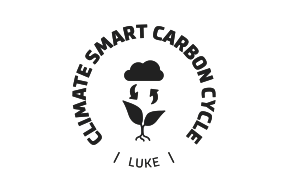Researchers’ recommendation: Agricultural policy reform should promote climate-smart agriculture
The European Union’s agricultural policy reform requires stronger climate measures also in agriculture. About half of greenhouse gas emissions in Finnish primary production is created by the cultivation of peat soils. Hence, the largest and quickest emission reductions are possible by changes in the agricultural practices on peat soils.
A joint policy brief by seven research projects encourages to implement emission reduction and carbon sequestration measures both on peat and mineral soils. The researchers recommend that Finland’s strategic plan for the EU’s common agricultural policy (CAP) should include sufficient incentives to abandon cultivation on peat soils or to restore their hydrology especially when the fields do not produce food, fodder or other crops and have minor importance for biodiversity.
A selection of measures for peat soils is required so that different farms can find suitable ones encouraging to conserve the peat layer. In order for the transition to climate-smart land-use be fair and acceptable to farmers, it is also important to identify the income effects of climate measures in agriculture in various areas and production sectors.
The CAP strategic plan should also include incentives for farmers to maintain good soil fertility and promote carbon sequestration on mineral soils which contribute to 89% of arable area in Finland.
Climate measures should be targeted to most effective and acceptable areas
The researchers say that climate measures should be started by targeting incentives on areas and means being most effective and acceptable to farmers, such as fields having lost their production capacity.
In Finland, there is the total of 13,000 ha of croplands on peat soil which have not produced food or fodder in the past 10 years. Furthermore, under 70,000 ha of croplands on peat soil have been abandoned and removed from production but still create emissions. These are the primal targets of the emission reduction measures.
Final solutions are in the hands of farmers
A part of measures sequestering carbon to the soil or reducing GHG emissions to the climate can be included in the national CAP strategic plan, a part will need control from the market, novel incentives or changes in the usual practices. New methods can also require changes in the farmers’ thinking and tolerance of uncertainty because improving the soil health can at the beginning require more inputs than it produces outputs.
Farmers are largely supportive of measures aiming at reducing agricultural climate emissions. However, there are geographical differences in attitudes which are due to e.g. the share of croplands on peat soil.
According to the studies, farmers want practical information and guidance on changing their cultivation methods into ones sequestering carbon or reducing emissions. Farmers also need economic support for experimenting with new cultivation methods and payments to compensate income losses caused by climate measures.
The following projects collaborated in policy brief Soil as part of climate solution – agricultural policy reform to promote climate-smart agriculture:
- SOMPA – Novel soil management practices – key for sustainable bioeconomy and climate change mitigation
- Just Food – Tackling inequalities on the way to a sustainable, healthy and climate-neutral food system
- MULTA – Multi-benefit solutions to climate-smart agriculture
- RATU – Economically feasible alternatives to management of deep peat soils in agriculture
- OPAL-Life – Optimizing agricultural land use to mitigate climate change
- CANEMURE – Towards Carbon Neutral Municipalities and Regions
- Turvepäästö – Mitigation of environmental load in crop production on peat soils



